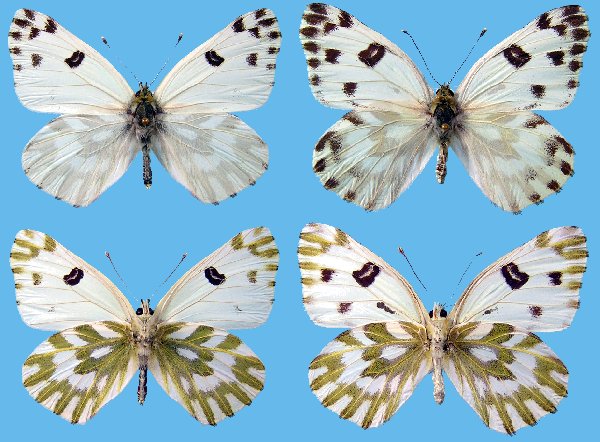Pontia beckeri

Beginner Rearing Instructions: Becker's White
Photo Life History: Pontia beckeri
Habitat: Mountain Canyons; Pinyon Juniper; Agricultural Areas; Desert Hills & Mountains
Host Plants: Brassica nigra; Stanleya pinnata; Cleome serrulata; Isatis tinctoria; Descurainia pinnata; Sisymbrium altissimum; Sisymbrium irio; Streptanthella longirostris
Suitable Lab Host Plants: Almost any mustard will serve in the lab. Avoid Descurainia sophia.
Caring for Live Female Butterflies: Feed females regularly.
Methods of Female Oviposition: Portable Cages; Open Screen Cages (Females can be quite prolific at laying dozens if not hundreds of eggs in the lab.)
How to Find Eggs: Look on Flower Buds; Look on Upper Half of Plant
How to Hatch Eggs: Separate eggs individually.
How to Find Caterpillars in the Field: Look for Caterpillar Strip Patterns. (This is especially obvious for P. beckeri.)
Caterpillar setups: Open Bucket; Twin Cup Method
Larva to Pupa: Larva Changes Color
How to Find Pupae in the Field:
Number of Broods per Year: 2-3 broods; depending upon location.
Overwintering Stage: Pupa.
Overwintering Strategies: Your Own Backyard; Refrigerator
Post-Hibernation Strategies: Expose pupae to warmer temperatures, long-day photoperiod, and intermittant humidity (mist spray with water once or twice a day).
Avoiding Diapause Techniques: Provide larvae with healthy host plant.
Disease Prevention: Change out host plant and remove frass every five to six days using the open bucket method.
Emergence: Emergence Container
Field Notes: This butterfly can be especially common along the Colorado Plateau, San Rafael Swell, Utah's West Desert, and other semi-arid areas where any of its larval host plants thrive.

